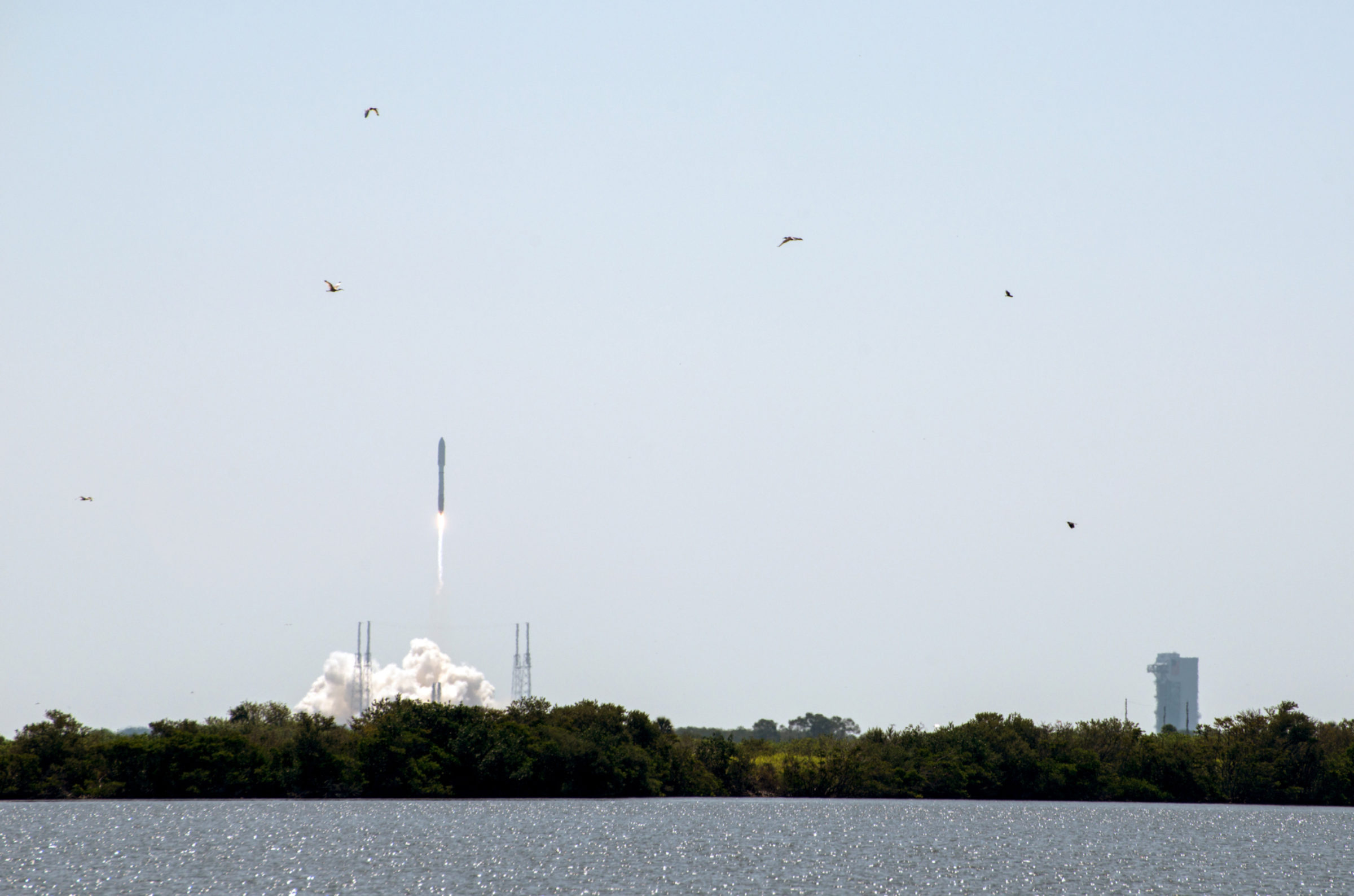Jason Davis • May 20, 2015
Liftoff! LightSail Sails into Space aboard Atlas V Rocket
The first of The Planetary Society’s two LightSail spacecraft is now in space following a late morning launch from Cape Canaveral Air Force Station in Florida. Liftoff occurred at 11:05 a.m. EDT (15:05 UTC). The Centaur upper stage and primary payload are in their preliminary orbit, with LightSail and its CubeSat companions bolted near the aft section in the secondary ULTRASat payload. LightSail spacecraft separation is expected to occur at 1:05 p.m. EDT.
For a timeline of LightSail day one mission events, click here.

Launch of the United Launch Alliance Atlas V occurred on time under a cloudless, pale blue sky. The countdown proceeded smoothly without any major issues. Five and a half-miles away at the Kennedy Space Center Apollo/Saturn V Center, a group of about 50 Planetary Society staff members and invited guests were on hand to send the spacecraft on its way.
The rocket's primary payload is the U.S. Air Force’s Orbital Test Vehicle, otherwise known as the Boeing X-37B spaceplane. Powered by a single RD-180 engine without the aid of solid rocket boosters, the Atlas V 501 rose slowly into the sky, taking several seconds to clear the lightning towers surrounding the pad. Boeing fact sheets list the vehicle’s weight at five metric tons, roughly 1,000 times heavier than LightSail.
After LightSail deploys from Centaur, its autonomous flight sequence will boot, commanding the antenna to deploy 55 minutes later. First possible contact occurs at 2:19 p.m. EDT (18:19 UTC) when the spacecraft is in range of its Cal Poly San Luis Obispo ground station. However, since LightSail will initially be bunched together with nine other chirping CubeSats, it may take additional passes over both the Cal Poly and Georgia Tech ground stations before LightSail’s signal can be conclusively heard.
The first LightSail flight is a shakedown cruise designed to pave the way for a full-fledged solar sailing demonstration in 2016. For the second mission, a nearly identical LightSail craft will ride to orbit with Prox-1, an automated rendezvous demonstration vehicle built by students at Georgia Tech. Both LightSail and Prox-1 will hitch a ride to orbit courtesy of SpaceX’s Falcon Heavy rocket.
For the Planetary Society, the launch of LightSail marks the culmination of a six-year effort to send a solar sail CubeSat to space. The project began in 2009, but was temporarily sidelined by technical and funding challenges, as well as the need to find a sufficiently high-altitude flight. The spacecraft was originally built by San Luis Obispo-based Stellar Exploration, Inc. In 2014, Ecliptic Enterprises Corporation became the vehicle’s prime contractor, and Doug Stetson joined the team as project manager. Boreal Space serves as a contractor to Ecliptic. Testing and integration for LightSail occurs at Ecliptic as well as Cal Poly San Luis Obispo.
Support our core enterprises
Your support powers our mission to explore worlds, find life, and defend Earth. You make all the difference when you make a gift. Give today!
Donate

 Explore Worlds
Explore Worlds Find Life
Find Life Defend Earth
Defend Earth

